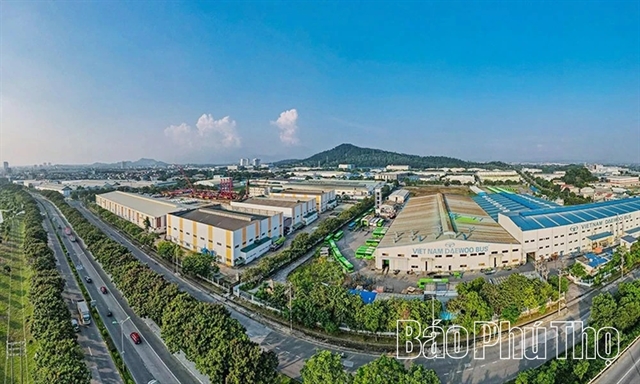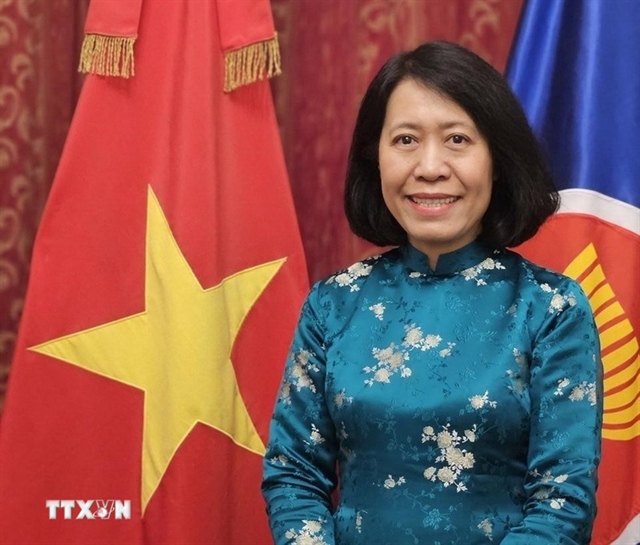 Economy
Economy

Positive changes to Việt Nam’s macroeconomy have been recognised by international rating organisations, with the latest sovereign upgrade announced by Fitch Ratings last month.

|
| Stephen Schwartz |
Positive changes to Việt Nam’s macroeconomy have been recognised by international rating organisations, with the latest sovereign upgrade announced by Fitch Ratings last month.
On the sidelines of the “Fitch on Việt Nam” event held in Hà Nội on Tuesday, Stephen Schwartz, head of Fitch Ratings’ Asia-Pacific Sovereigns, talks with Việt Nam News reporter Thu Hà about the impacts of the revision on Việt Nam’s economy and key drivers to help the country sustain its growth momentum.
Why did Fitch Ratings decide to revise Việt Nam’s sovereign outlook to positive from stable?
Fitch’s revision of Việt Nam’s sovereign outlook to positive from stable on May 9 was based on the improving track record of economic management. In particular, Government debt continues to decline and external buffers are strengthening from persistent current account surpluses.
Việt Nam also continues to register high GDP growth rates with stable inflation. We project GDP growth of 6.7 per cent in 2019 and 2020, which would place Việt Nam among the fastest growing economies in the Asia-Pacific region.
How will the move affect Việt Nam’s economy, especially foreign investment attraction?
Việt Nam remains successful in attracting foreign direct investment in the export-oriented manufacturing sector. We expect this trend to continue given the country’s low cost advantages and its strong global supply-chain linkages.
Escalating trade tensions pose a risk to the external outlook. However, Việt Nam may partially benefit from some relocation of firms’ manufacturing from China to Việt Nam, although this may take a long time to materialise.
What pressing issues need to be resolved in the short-term to ensure the country doesn’t fall back from its positive sovereign credit outlook?
The following would be potentially negative for the rating: a shift in the macroeconomic policy mix that results in macroeconomic instability or an increase in macroeconomic imbalances, depletion of foreign-exchange reserves sufficient to destabilise the economy or hurt foreign investment, or a crystallisation of contingent liabilities on the sovereign’s balance sheet.
What advantages does the country have to maintain its attraction and sustain its growth momentum?
Large FDI inflows into the export-oriented manufacturing sector remain a key growth driver. One of Việt Nam’s advantages in attracting FDI is its low cost of production.
A continued policy focus on maintaining Việt Nam’s cost competitiveness, while maintaining macroeconomic stability and a further build-up of external buffers would support Việt Nam’s long-term economic prospects.
What are Việt Nam’s prospects compared with other ASEAN economies?
Việt Nam is well positioned among ASEAN economies when it comes to growth prospects given its favourable demographics in the coming years, and high investment rates.
Việt Nam’s low cost of production and strong linkages to global supply chains is a strength and should continue to attract foreign direct investment into the country.
Many headwinds are challenging the global economy and Việt Nam is not immune. What are the main concerns for the country’s economy? What is key to its economic success in 2019 and the coming years?
A weaker external environment is a risk to the outlook, given Việt Nam’s high degree of trade openness. We expect weaker external demand to lead to a modest narrowing of the current account surplus in 2019 and 2020 from its 2018 level, along with somewhat weaker growth of 6.7 per cent in 2019 from 7.1 per cent in 2018.
Factors that could be positive for the credit rating are an improvement in public finances reflected in a decline in the general government debt ratio or contingent liabilities, a material reduction in risks posed to the sovereign balance sheet from weaknesses in the banking sector or a continued commitment to macroeconomic stability and a further build-up of external buffers.
Việt Nam is targeting to move from a frontier to an emerging market economy. In your opinion, what should the country do to achieve this ambition?
Our understanding is that equity and bond market index inclusion and policies to attract sustained foreign investment will over time support Việt Nam’s ambition to achieve emerging market status. — VNS




